Best
AFFORDABLE HARP STRINGS
-
Overall: Complete set of Nylon Strings
-
Best Feature: Replacement Strings For Gear4music Harps
-
TedScore™: 8/10
Best
OVERALL HARP STRINGS
-
Overall: Nylon core with silver-plated copper wire winding
-
Best Feature: The full set includes strings for a 34-string harp
-
TedScore™: 9/10
Best
BEGINNER HARP
STRINGS
-
Overall: Set of 36 strings designed for Celtic harps
-
Best Feature: Covers a full range of pitches
-
TedScore™: 8/10

Harp strings need careful cleaning to keep that lovely sound alive and extend the life of the instrument.
Regular maintenance ensures that each pluck resonates clearly and true to pitch.
Dirt and oils from your fingers can build up on the strings over time, causing them to sound dull.
By keeping them clean, you not only make your harp look more appealing but also prevent potential damage to your instrument.
You might wonder how to clean Harp strings. Since the whole harp is tough but fragile, it might be scary to clean it. Knowing the right method for cleaning and maintaining its strings is important.
Go on, keep reading! As a harpist, I’ll teach you how to clean your harp safely!
Preparing to Clean Your Harp
ONE
Before you begin your musical makeover, remember that cleaning your harp can enhance its appearance and sound quality.
A thorough clean ensures your instrument continues producing heavenly melodies for years (or eternity! HAHA).
Assembling Cleaning Materials

First things first: let’s gather your cleaning weapons.
You’ll need a soft, lint-free cloth—microfibre is your best friend here.
Consider a gentle makeup brush for stubborn dust that can navigate the nooks and crannies without scratching your harp’s finish.
Keep moisture to a minimum; a slightly damp cloth can help with sticky spots, but the keyword here is ‘slightly.’
Assessing Your Harp's Condition
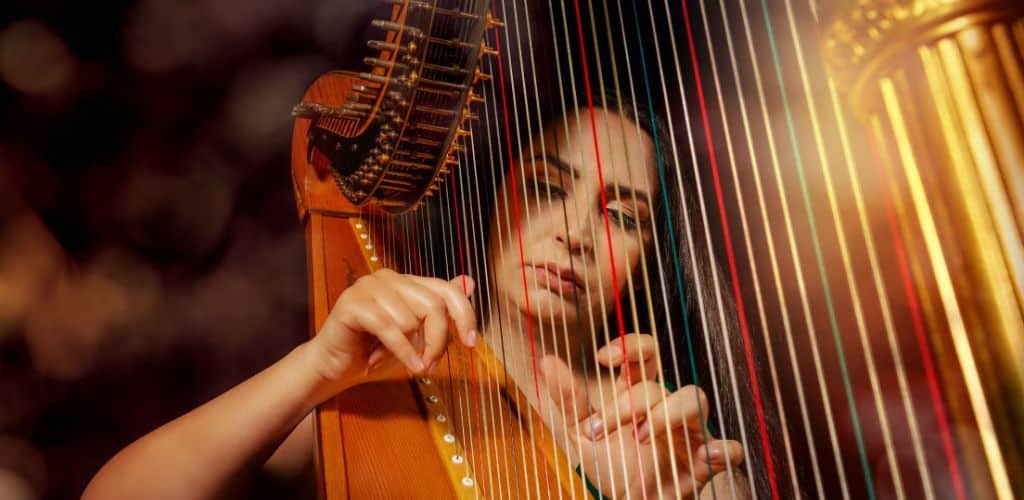
Take a good look at your harp before starting.
Check for any signs of damage or areas that need special attention—a crack that’s collecting dust or a string that’s looking a tad too tired for a tune.
Always note the room’s temperature and humidity; these silent string killers can affect your cleaning process and the harp itself.
Cleaning Process
TWO

Proper maintenance of your harp is essential to its lastingness and sound quality. Here’s how to keep your strings singing and your instrument looking its best.
Dusting the Soundboard
Before getting into the nitty-gritty of string cleaning, start with the soundboard.
Use a completely dry, soft brush to sweep away dust gently.
Be careful around the delicate areas to avoid scratching this vital part of your harp.
Wiping Down Strings and Structure
Now, let’s move on to the strings.
Dampen or spray a cotton cloth with warm water—no detergents—and wring it out well.
Wipe the length of each string one string at a time to remove any accumulated grime. Careful wiping keeps the structure in top form, especially the tuning pins.
Add Your Heading Text Here
Finally, a specialized polish is used to address any tarnish on metal parts or to spruce up gilded areas.
Opt for a polish suitable for jewelry or delicate items.
Apply it gently since these are often your harp’s most ornate, eye-catching parts.
Harp Maintenance Tips
THREE
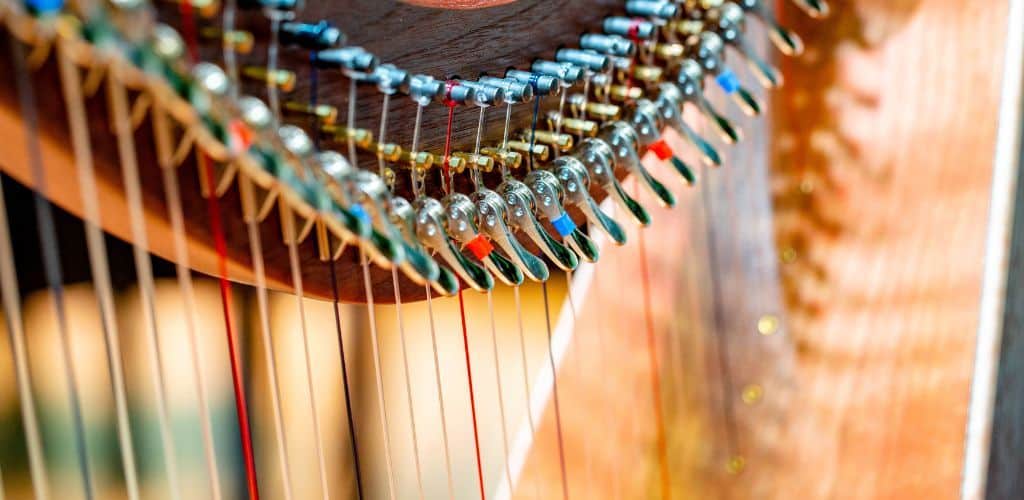
Caring for your harp ensures its melodic tunes stay as enchanting as the day you first played. Proper maintenance is the key to a long-lasting sound quality.
Tuning and Troubleshooting
Frequent tuning keeps your harp sounding its best, especially before every violin practice session.
Use an electronic tuner for accuracy. Start tuning from the middle C, working your way out to maintain the tension balance on the neck/pillar assembly.
Turn the tuning pins gently when tuning, as forceful turning risks damaging the pins or snapping strings.
If you encounter a tuning pin that won’t hold, it may need a delicate adjustment or, in some cases, replacement—Musicmakers or other specialized suppliers have the parts you need.
Protecting Your Harp From Damage
Guarding your harp against scratches and moisture is an act of love that pays dividends. Yep, your harp needs lovin’, too!
When not in use, shield your harp by covering it or placing it in a case.
Temperature fluctuations are a silent adversary for your harp’s well-being. Store your instrument in a stable environment away from direct sunlight and heating sources to prevent warping or cracking.
Remember, zither pins and bridge pins are particularly sensitive to these changes.
Periodic checks keep harps adorned with sharpening levers operational. They should pivot smoothly without resistance—any stiffness indicates they may need a professional look or a spot of lever oil.
String You Might Want to Check Out!

Before we end, I’d like to share my top recommendations for harp strings I have tried!
PYRAMID
The strings of the Pyramid 643/34 Irish/Celtic Harp deliver a harmonious and full-bodied sound, ensuring a responsive, sensitive touch that elevates the quality of my traditional Celtic music performances.
Pyramid 643/34 Irish / Celtic Harp
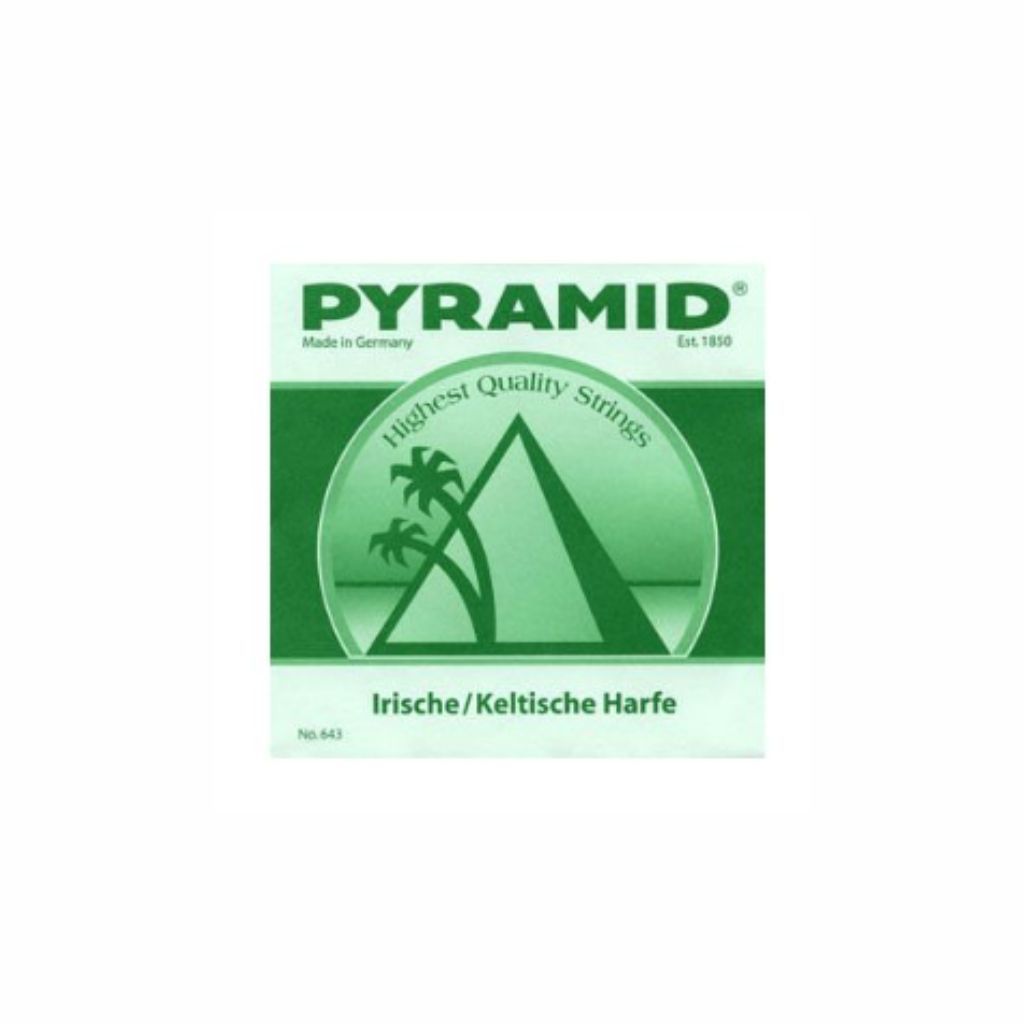
FEATURES: Nylon core with silver-plated copper wire winding
OTHER INFO: The full set includes strings for a 34-string harp
- Durable construction ensures the longevity of strings
- Delivers a bright and clear tone characteristic of Celtic music
- It may be more expensive than some other string brands
When you click ‘Check Price’, you’ll see there are loads of great places to buy this item. Our personal favorite is Sweetwater for the US, and Thomann and Gear4Music for the UK & Europe.
They are the largest music retailers, with excellent customer service, competitive prices, really fast shipping, and the longest guarantees.
The professional musician who wrote this article combined many things,
from the product build, manufacturer’s reputation through to feedback
from other users, to create our famous TedScore™.
GEAR4MUSIC
I consistently suggest the Gear4music 36-string Harp String Set to my pupils due to its dependable and evenly distributed tonal range.
It’s an economical choice for restringing a harp that maintains excellent sound integrity.
36 String Harp String Set by Gear4music
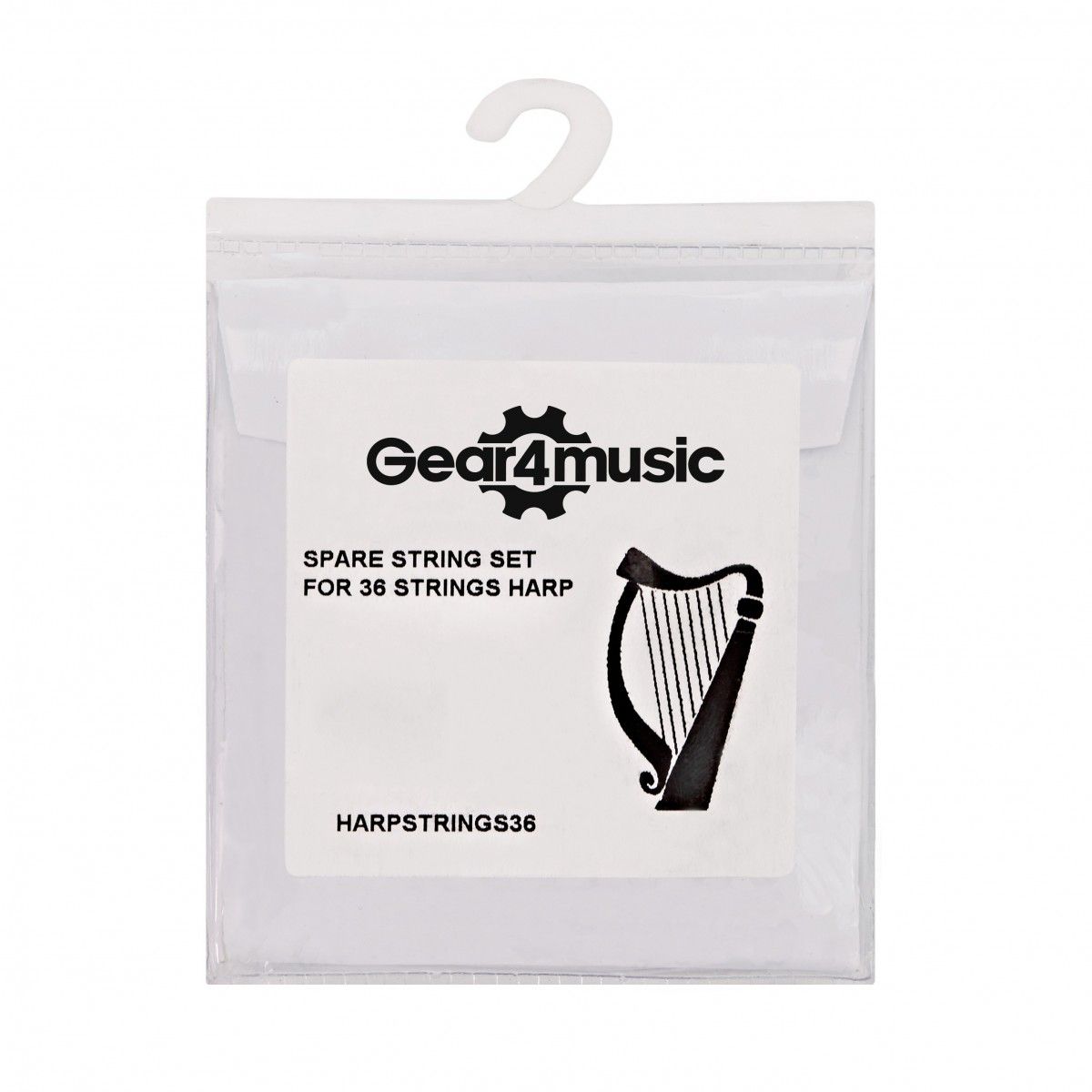
FEATURES: Complete set of Nylon Strings
OTHER INFO: Replacement Strings For Gear4music Harps
- Colour Coded To Signpost C And F
- None!
When you click ‘Check Price’, you’ll see there are loads of great places to buy this item. Our personal favorite is Sweetwater for the US, and Thomann and Gear4Music for the UK & Europe.
They are the largest music retailers, with excellent customer service, competitive prices, really fast shipping, and the longest guarantees.
The professional musician who wrote this article combined many things,
from the product build, manufacturer’s reputation through to feedback
from other users, to create our famous TedScore™.
THOMMAN
I love the sound of the Thomann Strings for Celtic Harp 36 on my instrument. It offers deep, lively sounds and has demonstrated robustness through regular use and performances.
Thomann Strings for Celtic Harp
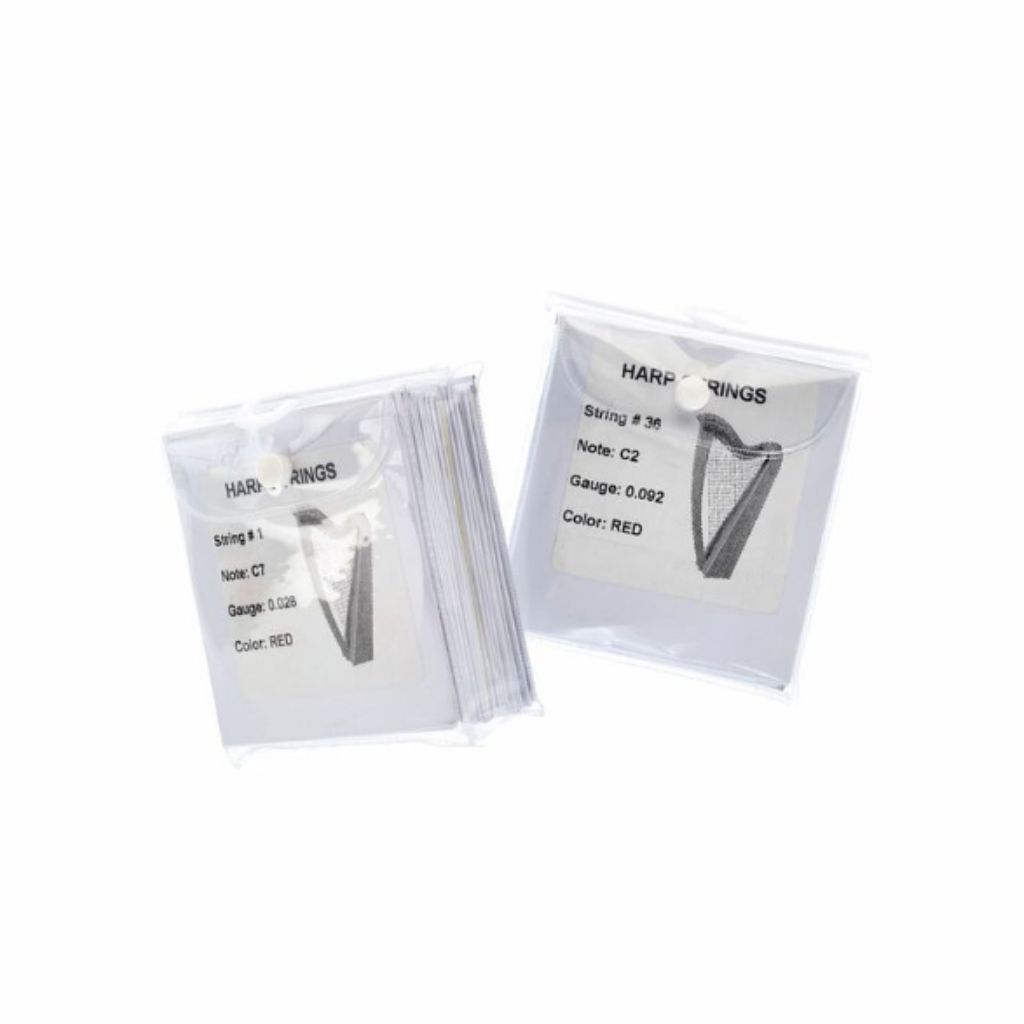
FEATURES: Set of 36 strings designed for Celtic harps
OTHER INFO: Covers a full range of pitches for a 36-string harp
- Reasonably priced, offering good value for harpists
- Nylon strings offer durability and resistance to humidity
- Nylon may not produce the same warmth as gut strings
When you click ‘Check Price’, you’ll see there are loads of great places to buy this item. Our personal favorite is Sweetwater for the US, and Thomann and Gear4Music for the UK & Europe.
They are the largest music retailers, with excellent customer service, competitive prices, really fast shipping, and the longest guarantees.
The professional musician who wrote this article combined many things,
from the product build, manufacturer’s reputation through to feedback
from other users, to create our famous TedScore™.
How to Clean Harp Strings:
Wipe Here and There and Everywhere!
Maintaining your harp’s glimmer isn’t just for looks—clean strings can actually enrich your sound.
Remember, here is how you clean your strings:
Gently wipe each string with a dry, soft cloth after playing to prevent dirt buildup.
Don’t forget the nooks near the tuning pegs; that’s dirt’s favorite hideout.
Always avoid harsh chemicals which can damage the strings and shorten their life.
Dampen a cloth with water or a mild soap solution for a deeper clean.
But remember, a little moisture goes a long way—too much can damage the wooden components of your harp.
Occasionally, inspect your strings for any signs of wear or corrosion.
Replace strings as needed to keep the music flowing beautifully from your fingertips.
A well-cared-for harp is your music’s best friend, ensuring every note you play resonates with pure heavenly joy!
Hold up! The story doesn’t end there…
If you want to know amazing tips on how to play the harp, read this next one!
FAQ's
To clean lyre strings, gently rub them with a soft, dry cloth to remove dust and oils. For more thorough cleaning, use a cloth slightly dampened with rubbing alcohol or hand sanitizer, being careful to avoid the instrument’s woodwork.
To care for a dusty string harp, regularly dust the instrument surfaces with a soft, dry cloth or a feather duster and carefully clean around the strings and soundboard, avoiding any abrasive materials that could damage the wood or strings.
To clean instrument strings, gently wipe them down with a soft, dry towel to remove oils and residue after each use. For a deeper clean, use a cloth dampened with a small amount of rubbing alcohol, being careful not to get any on the instrument’s body.
The frequency of changing harp strings varies depending on usage and string material. Still, as a general guideline, replacing them every 1 to 5 years is recommended, with more frequent changes for frequently played or broken strings.










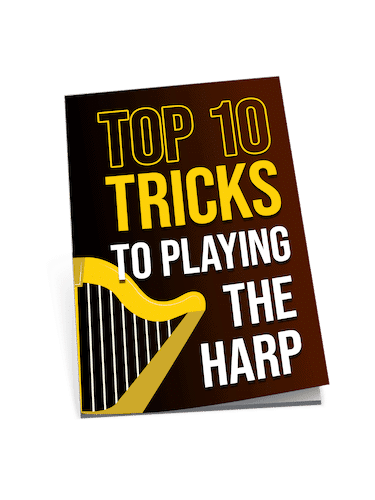
i always wondered how you clean those things, cool.
I have to disagree with a point in the article regarding the wiping down of strings. While it’s important to keep them clean, excessive cleaning with certain chemicals can actually lead to deterioration over time. It’s crucial to mention that specific types of cleaners should be used sparingly.
Good point, HarpingOnIt. Any specific cleaners you recommend then?
Awesome article! I don’t even play the harp but this makes me want to start. The cleaning tips were super helpful.
Hey Bethan Semmens, loved the detailed guide! Just wondering, do you have any particular brands you recommend for the cleaning materials? Finding the right products that won’t harm my harp is always a bit of a worry for me.